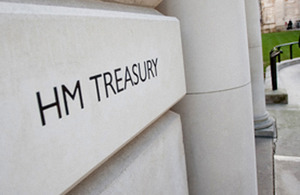Chancellor announces major increase to National Living Wage
The National Living Wage will rise to two-thirds of average earnings, the Chancellor announced today (Monday 2 October).

- National Living Wage will rise to two-thirds of average earnings
- Chancellor commits to Low Pay Commission recommendations, with latest forecasts showing a pay boost next year worth over £1,000 for 2 million low-paid workers
- successive rises mean a full-time worker on the National Living Wage will be over £9,000 better off than they would have been in 2010
In a significant boost for the UK’s lowest paid, the Chancellor committed to accept the Low Pay Commission’s recommendations - which will be announced in November. Based on the Low Pay Commission’s latest forecasts, this would see the National Living Wage increase to over £11 an hour from April 2024 and would mean the annual earnings of a full-time worker on the National Living Wage will increase by over £1,000 next year.
People currently aged 23 and over are eligible for the National Living Wage, with over 2 million workers on low pay set to benefit from the increase. The announcement, after successive rises since its introduction in July 2015, means a full-time worker on the National Living Wage will be over £9,000 better off than they would have been in 2010.
Each year, the independent Low Pay Commission produces recommendations to the Government on National Living Wage and National Minimum Wage rates. This year it is due to make recommendations for the rates that will take effect from April 2024, based on their remit which sets a target for the National Living Wage to reach two-thirds of median earnings by 2024 for workers aged 21 and over, taking economic conditions into account.
Further information
Projected coverage of National Living Wage/National Minimum Wage workers in April 2023 across the UK’s countries and regions
| Region | National Living Wage |
|---|---|
| North East | 130,000 |
| North West | 300,000 |
| Yorkshire & Humber | 310,000 |
| East Midlands | 200,000 |
| West Midlands | 270,000 |
| South West | 200,000 |
| East | 220,000 |
| London | 200,000 |
| South East | 280,000 |
| Wales | 120,000 |
| Scotland | 180,000 |
| Northern Ireland | 130,000 |
| Total | 2,540,000 |
History of the NLW
- Since 1999, the UK has had a National Minimum Wage, which is uprated annually based on the advice of the independent Low Pay Commission (LPC).
- The LPC is made up of representatives from business, employee and academic communities and reaches a consensus agreement on this uprating.
- Prior to the first target announced in 2015, the LPCs remit was to set rates as high as possible without significant employment impacts.
- The first minimum wage target was announced in 2015, when he announced the introduction of the National Living Wage (NLW) from April 2016. The NLW had a target to reach 60% median earnings by 2020. This target was met in October 2020.
- In 2019 a new target was announced for the NLW to reach two thirds of median earnings by 2024.
- The target for the NLW to reach two thirds of median earnings was set to ‘end’ low pay according to the ONS definition.